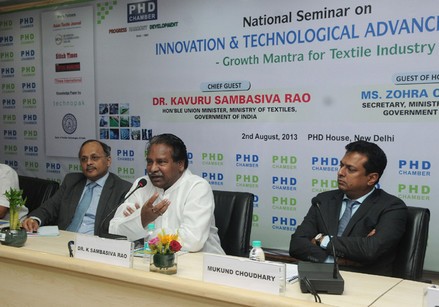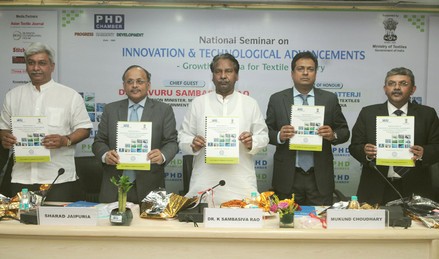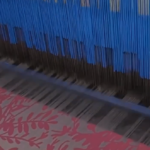Government and Industry collectively responsible for deceleration of growth of textile sector : Textile Minister
Reluctance of both government and industry to invest in research and development in textile sector in India has led to its current state of affairs in which domestic industry is loosing out its competitiveness to its competitors and counterparts, says Dr. Kavuru Sambasiva Rao, Union Minister of Textile, Government of India.The Minister, however, indicated saying that it is one of the primary reason that Indian textile industry’s share in global world trade has declined.
Inaugurating a National Seminar on Innovations & Technological Advancements: Growth Mantra for Textile Industry in New Delhi, under the aegis of PHD Chamber of Commerce and Industry (PHDCCI), the Minister stressed that due to negligence of both government and industry had led to not invest in R&D textile sector. This has resulted in a passive growth of the textile industry which needs to be reversed.

The Union Minister for Textiles, Dr. Kavuru Sambasiva Rao addressing the National Seminar on Innovation & Technological Advancements – Growth Mantra for Textile Industry, in New Delhi on August 02, 2013.
Despite several government schemes launched by Union Textile Ministry under aegis of successive government the sector has yet to emerge for an economy of scale, pointed out Dr. Rao.
The industry should take the initiative along with government to improve the availability of skilled labour suggested Dr. Rao to various industrialists of PHDCCI attending national seminar.
Responding to a clarification, sought by one of the members of the PHDCCI during the deliberations on the seminar in regard to expansion of interest subvention scheme in textile sector to a rate of 3%, Dr. Rao hinted that the Chamber should come out with a specific proposal to the Ministry of Textile to enable it to endorse to authorities concerned in the department of Commerce and Industry.
The Minister was extremely liberal in asking the industry to list out the slippages of India inc. in textile sector to convenience the government to dole out packages for it in case such proposals have merits.

The Textiles Minister releasing a booklet at the National Seminar on Innovation & Technological Advancements – Growth Mantra for Textile Industry
In his welcome remarks, Mr. Sharad Jaipuria, Sr. Vice President, PHDCCI, Jaipuria highlighted “India is one of the world’s largest producers of textiles and garments. Apart from providing one of the basic necessities of life, textile also plays a vital role through its contribution to industrial output, employment generation and export earnings of the country. The sector contributes about 14 per cent to industrial production, 4 per cent to the gross domestic product (GDP), and 17 per cent to the country’s export earnings. It provides direct employment to over 35 million people. The textiles sector is the second largest provider of employment after agriculture”.
In his key note address Mr. Mukund Choudhary, Chairman, Task Force on Textiles, PHDCCI stressed that innovation should become the only means of survival in textile industry as almost all the major players are engaged in research and development regarding raw materials and their applications.
Another speaker Mr. Ashish Bagrodia, Managing Director, Winsome Textile sought to impress upon the point that textile industry made a significant contribution to the national economy in terms of direct and indirect employment generation and net foreign exchange earnings as the textile industry is expected to reach at US$ 220 billion by 2020.





